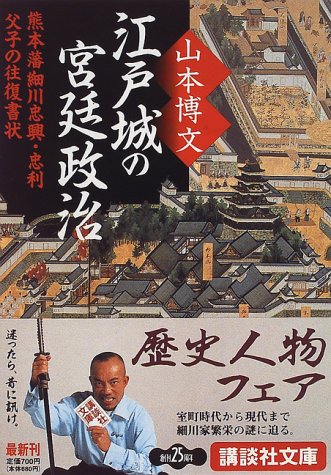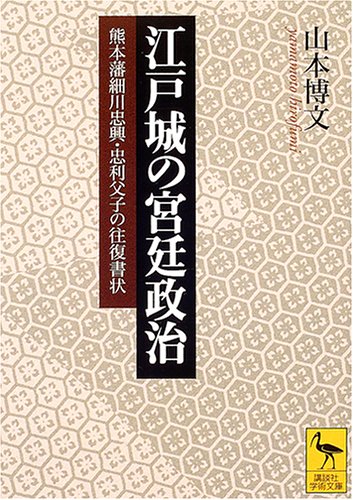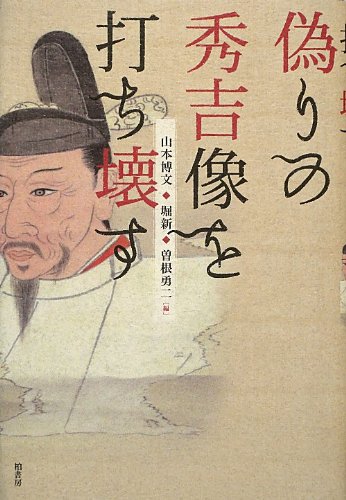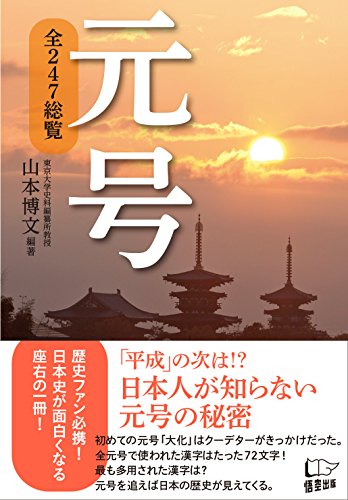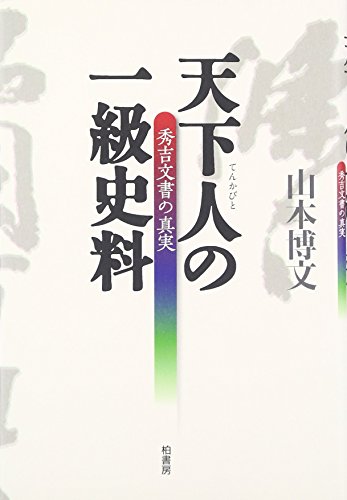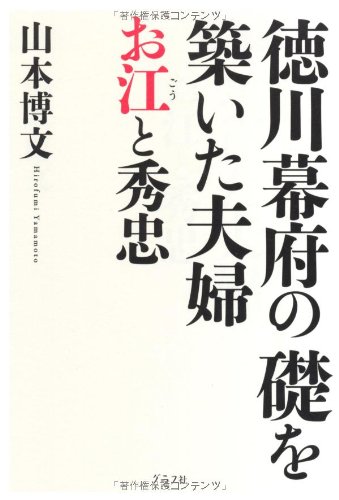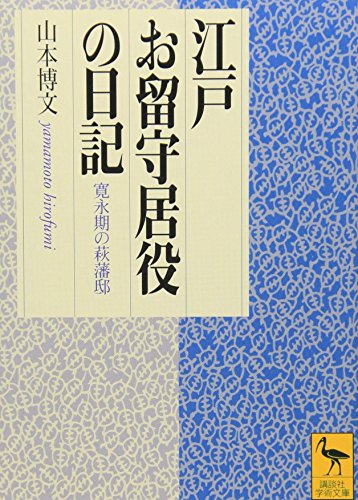3 0 0 0 江戸城の宮廷政治 : 熊本藩細川忠興・忠利父子の往復書状
3 0 0 0 江戸城の宮廷政治 : 熊本藩細川忠興・忠利父子の往復書状
3 0 0 0 江戸城の宮廷政治 : 熊本藩細川忠興・忠利父子の往復書状
2 0 0 0 偽りの秀吉像を打ち壊す
- 著者
- 山本博文 堀新 曽根勇二編
- 出版者
- 柏書房
- 巻号頁・発行日
- 2013
2 0 0 0 OA 豊臣政権の政治機構の文書学的研究
- 著者
- 堀 新 佐島 顕子 村上 隆 山田 邦明 山本 博文 矢部 健太郎 鴨川 達夫 白根 孝胤 曽根 勇二 堀 智博 堀越 祐一 光成 準治 山崎 布美
- 出版者
- 共立女子大学
- 雑誌
- 基盤研究(B)
- 巻号頁・発行日
- 2009
2009~2011年度を通じて、史料調査の実施、研究会の開催、データ入力、の3点を共同研究の中心に据えて活動した。3年間に史料調査先は50ヶ所以上、研究会は15回、事務的会合は約30回、メールでの打ち合わせは無数であった。史料調査の際には周辺のフィールドワークを行った。データ入力は、豊臣秀吉発給文書・豊臣奉行人発給文書を中心に、古記録もあわせて約4000点に及んだ。研究会の成果の一部は、山本博文・堀新・曽根勇二編『消された秀吉の真実』(柏書房、2011年)として公表した。
- 著者
- 山本 博文
- 出版者
- 青木書店
- 雑誌
- 歴史学研究 (ISSN:03869237)
- 巻号頁・発行日
- no.530, pp.p1-15, 1984-07
1 0 0 0 幕藩制の成立と近世の国制
1 0 0 0 元号 : 全247総覧
1 0 0 0 天下人の一級史料 : 秀吉文書の真実
1 0 0 0 OA SQMで福井の夜空の明るさを測る : 測定方法とその問題点
- 著者
- 山本 博文 小林 暉 藤井 純子
- 雑誌
- 福井大学地域環境研究教育センター研究紀要 「日本海地域の自然と環境」
- 巻号頁・発行日
- vol.24, pp.15-26, 2017-11-01
1 0 0 0 OA マグマ生成実験を活用したジオパークの小学校における火山教室
- 著者
- 三好 雅也 畑中 健徳 吉川 博輔 藤井 純子 馬渡 秀夫 小林 暉 内山田 朋弥 山本 博文
- 出版者
- 日本地学教育学会
- 雑誌
- 地学教育 (ISSN:00093831)
- 巻号頁・発行日
- vol.71, no.3, pp.57-69, 2019-02-28 (Released:2019-11-13)
- 参考文献数
- 19
恐竜渓谷ふくい勝山ジオパークの小学校における火山教室の実践結果と効果について報告する.火山教室は,火山活動と大地の形成に関する講義および七輪マグマ実験で構成される.実験において,児童は溶岩の温度(約1,000℃)を赤外放射温度計で実測し,砂山斜面を流れる溶岩が爪楊枝を燃やす様子を観察した.授業後アンケート調査結果は,児童が溶岩の高温を実感し,勝山の大地の成因と火山活動との関係について興味・関心を持ったことを示した.
1 0 0 0 徳川幕府の礎を築いた夫婦お江と秀忠
1 0 0 0 186 日本海東縁のインバージョンテクトニクス
- 著者
- 岡村 行信 山本 博文 佐藤 幹夫
- 出版者
- 一般社団法人 日本地質学会
- 雑誌
- 日本地質学会学術大会講演要旨 (ISSN:13483935)
- 巻号頁・発行日
- vol.1990, 1990
1 0 0 0 OA 双川喜文著『天正の土地改革』, 新地書房, 一九八二・一二刊, A5, 三六八頁
- 著者
- 山本 博文
- 出版者
- 公益財団法人 史学会
- 雑誌
- 史学雑誌 (ISSN:00182478)
- 巻号頁・発行日
- vol.92, no.10, pp.1674-1675, 1983-10-20 (Released:2017-11-29)
1 0 0 0 P-23 免疫賦活物質ビザンチンの受容体探索(ポスター発表の部)
- 著者
- 中野 真代 小田 真隆 永浜 政博 山本 博文 今川 洋 櫻井 純 西沢 麦夫 樽井 敬史 渋谷 昌弘 大林 寿美代 玉城 翔太
- 出版者
- 天然有機化合物討論会実行委員会
- 雑誌
- 天然有機化合物討論会講演要旨集
- 巻号頁・発行日
- vol.54, pp.333-338, 2012
Vizantine (3) is a synthetic derivative of treharose-6,6-dicorynomycolate (TDCM) which was characterized in 1993 as the cell surface glycolipid of Corynebacterium diphtheriae and shows a variety of significant biological activities for adjuvant development. In vitro, vizantine activates not only the macrophages of mice sera, but also induces the release of MIP-1β, IL-6, IL-8 etc. from human acute monocytic leukemia cell line cells (THP-1 cells). Because almost no TNF-α is induced in vivo, the lethal toxicity to animals was found to be ncredibly low. However, oral administration of vizantine to C57BL/6 mouse (p.o. 100 μg x 7 times) inhibits lung metastasis of B16-BL6 melanoma cells (which are classified in highly metastatic tumor cell). In recent years, structural components of the outer surface membrane of bacteria have attracted considerable attention as lead compounds for adjuvant development. However, a concern of the use of these compounds is that they can over-activate innate immune responses leading to the clinical symptoms of septic shock. Therefore, an important issue is a detailed knowledge of the immunostimulatory mechanism to harness beneficial effects without causing toxicity. Here, to advance the mechanistic studies of vizantine, we have synthesized magnetic beads-attached 4 that maintain immunological activities and can therefore act as a molecular probe. Using a pull-down assay of 4 and the extract of HEK-293T cells transfected with plasmid for TLR4 and MD2, vizantine was found to act as a ligand of the Toll-like receptor 4 (TLR4) and MD2 complex. Furthermore, the macrophage from TLR4 knockout (TLR4 -/-) mice showed decreased response to vizantine, but that from TLR2 knockout (TLR2 -/-) mice did not. Taken together the results suggest that vizantine suppresses the tumor lung metastasis through the activation of macrophages via TLR4/MD2 complex.
1 0 0 0 江戸お留守居役の日記 : 寛永期の萩藩邸
1 0 0 0 OA 若狭湾を襲った大津波履歴の解明
若狭湾地域に位置する福井県高浜町薗部の海岸低地において,津波によって形成されたと考えられるイベント砂層が見出された.薗部地区におけるコアリングおよびトレンチ調査により,深さ1m以浅のイベント砂層は海岸から550m以上内陸まで分布し,海岸の砂と同様のよく円磨された岩片を特徴とし,ところによっては貝殻,有孔虫,ウニのトゲなどの生物遺骸を含んでいた.また砂層基底部には明瞭な浸食が認められ,砂層中にはリップアップクラストがみられた.この砂層の堆積年代としては,上下の泥炭質層の14C年代測定結果からすると,14~16 世紀頃と推定された.
- 著者
- 窪田 正彦 新井 清 頼光 彰子 島岡 真佐子 星野 響 林 一之 伊田 泰康 南 典昭 山本 博文 田中 恵一 高田 三千人 西原 正勝 藤谷 幸治 神田 博史
- 出版者
- 公益社団法人日本薬学会
- 雑誌
- 藥學雜誌 (ISSN:00316903)
- 巻号頁・発行日
- vol.113, no.11, pp.810-817, 1993-11-25
The cultivation of Papaver bracteatum, having thebaine as a major alkaloid, needs permission by the law of the narcotic regulation in Japan. Therefore, the flowergrowing of P. bracteatum as garden plants is prohibited by law. Chemical, morphological and cytological analyses of gardening 18 plants of the section Oxytona of the genus Papaver collected in western Hiroshima prefecture were carried out as a preliminary study. On inquiry, thebaine was identified as an only alkaloid from one of the gardening plants. The amounts of thebaine contained in this sample was 0.68%. Petals of this plant are scarlet with black spots at their bases which are surrounded by bracts. These results indicated that one of the investigated plants was identified to be P. bracteatum.
1 0 0 0 豊臣政権期島津氏の蔵入地と軍役体制
- 著者
- 山本 博文
- 出版者
- 公益財団法人史学会
- 雑誌
- 史學雜誌 (ISSN:00182478)
- 巻号頁・発行日
- vol.92, no.6, pp.955-1001, 1106-1104, 1983-06-20
It is well known that, in the process of Toyotomi Hideyoshi's (秀吉) invasion of Korea, various feudal lords (daimyo 大名) were subjected to a consolidated military service levy based on the annual output in terms of rice (kokudaka 石高) of their domains. In this essay, the author will take up the process of how daimyo, who had not yet dismantled the castles and forts, built within their domains by warlords, during the previous Sengoku period (1467-1568), were able to muster the great amount of men and provisions for the Korean expedition. For this purpose, the Shimazu Family (島津氏) of Kyushu (九州), who played a leading role in the invasion, will be taken as a case in point. Actually, the Shimazu Family was not able to provide a military force for the initial maneuvers involved in the first expedition to Korea (1592-1595), and was, therefore, called upon to carry "Japan's greatest follow-up campaign." For this purpose, a land survey was carried out by a Toyotomi functionary, Ishida Mitsunari (石田三成), with an aim to significantly increase the directly held domains of the Shimazu Family. However, such a plan was nipped in the bud due to the resistance, forthcome from various classes of Shimazu subjects in response to the re-apportionment of fiefs effected by the Ishida survey. As a result, 78,000 koku 石 of the Shimazu holdings, valued at a total 200,000 koku, went into fallow due to an insuffiicience of cultivators. What this all means is that the original intent of Hideyoshi's land surveys (Taiko Kenchi 太閤検地), that is, the creation of direct daimyo holdings capable of satisfying the need for military provisions, as well as the formation of an enfeoffed entourage capable to shoulder the burden of military service, were, in a word, thwarted. Being unable to answer the call to arms, and faced with possible relocation out of Kyushu or even fall from daimyo status, the Shimazu were driven to expediency. Therefore, with promises of fief appropriations, they demanded such groups as locally based samurais (jizamurai 地侍) within their domains and direct vassals desiring additions in their holdings, to stand as the Shimazu force for the invasion of Korea. This demand was answered by a self-provisioned army, composed of such people as the former vassals of families, who had previously opposed the Shimazu and had fallen, vassals who had lost a good portion of their fiefs as a result of the Shimazu's pledge of allegiance to the Toyotomi Family, and local samurais who had been amassing military power while pracficing agricultural management. While, on the surface, the military forces under the Toyotomi regime were to be supported by funds from the public coffers, in the case of the Shimazu Family, whose direct holdings were incapable of provisioning a standing army, it to muster all voluntary self-provisioned force was the only possible alternative. In this very fact lies the proof to negate the conventionally held opinion that the military forces mustered by the Shimazu Family and other families of daimyo status for the Korean expeditions, were standing armies of military men completely separated from agricultural activities (heino bunri 兵農分離). Despite being the object of a thorough cadastre carried out by the central regime, the Shimazu domains still widely maintained local samurai status holders unremoved from agrarian responsibilities ; and rather than daimyo power working to negate these soldier-farmers, it actually strove to garner their support in meeting the military service demanded by the Toyotomi regime. Later, between the years 1611 and 1614, the Shimazu were to carry out their own land surveys and promulgate (in 1611) a set of restrictions ordering the separation of soldier and peasant. However, despite this, some of samurai rank throughout the Tokugawa feudal (bakuhan 幕藩) system still, in rare cases, set up camp in agrarian villages, and took the lead in agricultural management. In the case of the Shimazu land

